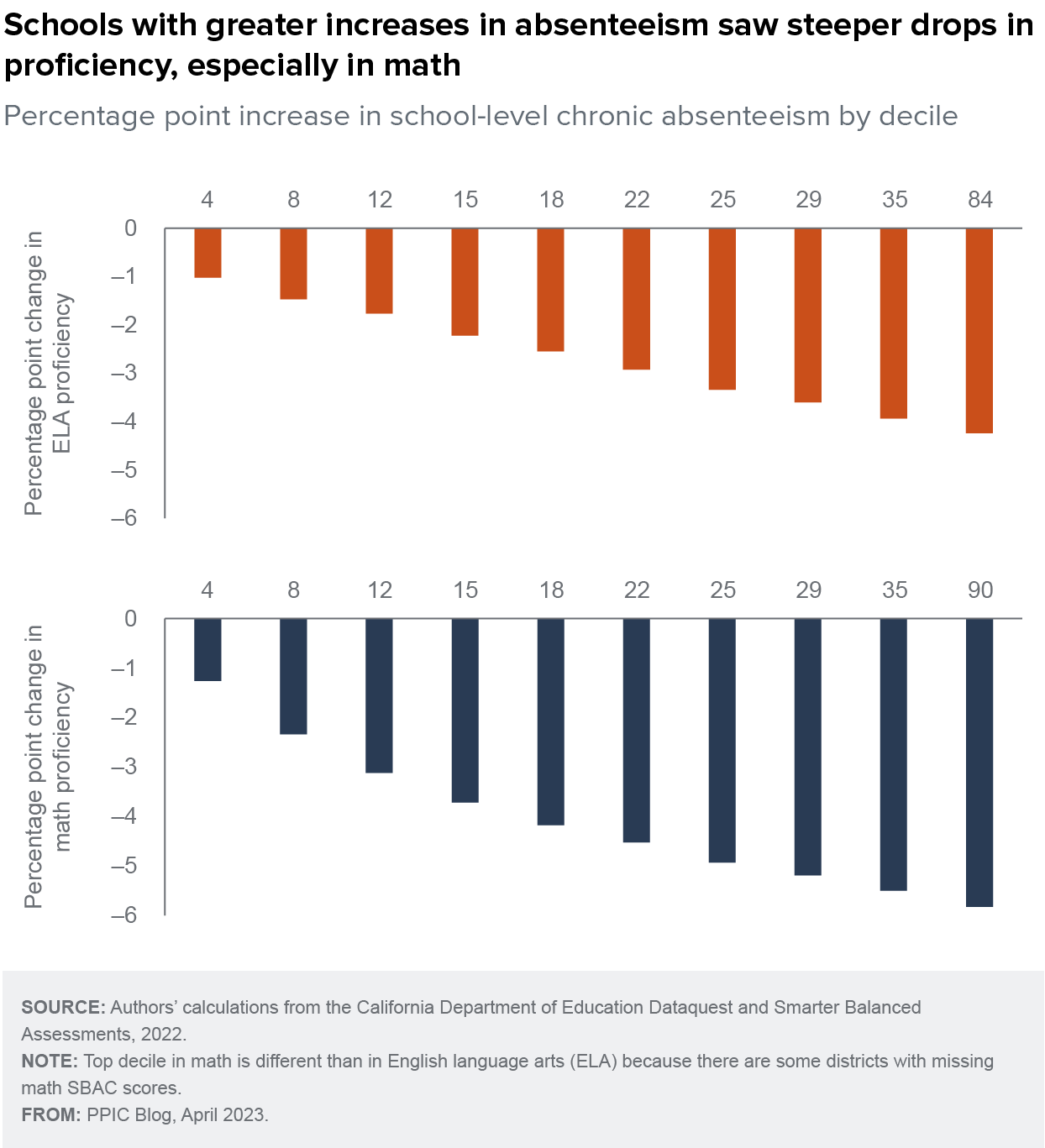Chronic absenteeism rose dramatically among California students during the COVID-19 pandemic, with 30% of public school students missing at least 10% of the school year (18 days or more) in 2021–22. In an earlier post, we found that absenteeism increased substantially across nearly all student groups, with Black, Native American, and Pacific Islander students seeing rates of chronic absenteeism of over 40%. In addition, absenteeism rose the most among younger students. Here, we examine whether recent high levels of chronic absenteeism—which includes both excused and unexcused absences—are associated with student performance on state tests and explore the implications for learning recovery.
We find that schools with greater increases in chronic absenteeism saw steeper drops in proficiency rates on the Smarter Balanced (SBAC) English and math tests, when comparing pre-pandemic levels (2018–19) to 2021–22. Notably, this relationship between rising chronic absenteeism and declining proficiency was stronger in math. For example, schools that experienced an increase in absenteeism of about 18 percentage points (the median increase across schools) saw roughly a 2.5 percentage point decline in English proficiency and a 4.2 percentage point decline in math proficiency. At schools with the largest increases in absenteeism, English proficiency was down over 4 percentage points and math proficiency declined by nearly 6 percentage points.

Importantly, this association does not necessarily imply that chronic absenteeism caused declines in proficiency—it could be that the same factors are responsible for both changes. For instance, rates of pandemic death and illness in a community may be driving both increases in chronic absenteeism and declines in proficiency. However, even if the relationship between chronic absenteeism and proficiency is not causal, it may have profound implications for learning recovery. Prior research has demonstrated a link between chronic absenteeism and school performance for both the students who miss school and the classmates of chronically absent students.
Federal and state funds are helping school districts support learning recovery, but chronic absenteeism could pose a significant obstacle to these efforts, especially if absenteeism remains above pre-pandemic levels. In places where proficiency fell the most, it will be even more difficult to boost achievement levels when large percentages of students are missing 10% or more of the school year. Monitoring how chronic absenteeism changes in the 2022–23 school year, especially among the youngest learners and students who saw the steepest spikes in absenteeism during the pandemic, will be critical for targeting resources and accelerating learning recovery.

